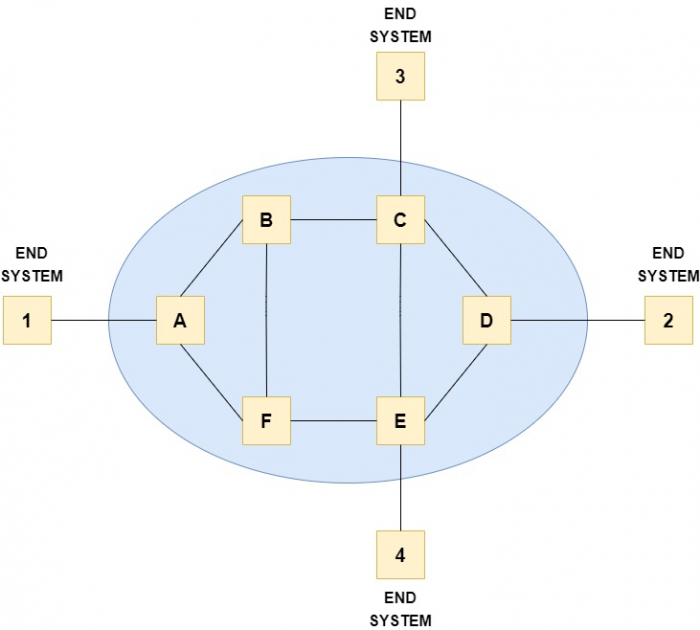
 Data Structure
Data Structure Networking
Networking RDBMS
RDBMS Operating System
Operating System Java
Java MS Excel
MS Excel iOS
iOS HTML
HTML CSS
CSS Android
Android Python
Python C Programming
C Programming C++
C++ C#
C# MongoDB
MongoDB MySQL
MySQL Javascript
Javascript PHP
PHP
- Selected Reading
- UPSC IAS Exams Notes
- Developer's Best Practices
- Questions and Answers
- Effective Resume Writing
- HR Interview Questions
- Computer Glossary
- Who is Who
Virtual Circuit in Computer Network?
A virtual circuit (VC) transfers data via a packet-switched network that makes it look like the source and destination end systems of the data are connected by a dedicated physical link. The terms "virtual circuit" and "virtual connection" are interchangeable.
A "call setup" must be established between two or more nodes or software programs before a connection or virtual circuit can be used.
A bit stream or byte stream may then be sent between the nodes. As a result, a virtual circuit protocol permits higher-level protocols to avoid dealing with data division into Protocol data units.
This network is a very dependable means of communication. Virtual circuits are expensive to set up.

How Does a Virtual Circuit Work?
The first step is to create a medium between the two end nodes. Packet transmission takes up a lot of resources. The sender is then provided a signal indicating that the medium has been set up and that transmission may begin. It guarantees that all packets are sent.
In the initial packet of the connection, a global header is utilized. A fresh connection is established whenever data is to be transferred. Since both virtual circuit communication and circuit switching are connection orientated, data is provided in the proper sequence in both situations, and signaling overhead is needed during the connection setup phase.
Circuit switching, on the other hand, guarantees a consistent bit rate and latency. Still, with a virtual circuit service, they may fluctuate owing to variables such as variable packet queue lengths in network nodes, varying application bit rates, fluctuating demand from other users using the same network resources via statistical multiplexing, and so on.
Closed-loop methods are employed after congestion is recognized in a virtual circuit network. This strategy can be approached in a variety of ways.
When congestion is identified, no new connections are created. When a telephone network is overcrowded, this method is used to prevent further calls from being established.
Another method for reducing congestion is to allow all new connections but route them such that the active router is not part of the path.
When a network connection is formed, several parameters are negotiated between the sender and recipient. During the configuration phase, the host sets the traffic's structure and volume and the quality of service, and other factors.
Advantages of Virtual Circuit
The sender's packets are sent to the recipient in the same sequence as they were sent.
A virtual circuit is a secure network connection.
In each packet, there is no need for overhead.
In a virtual circuit, a single global packet overhead is employed.
Disadvantages of Virtual Circuit
The implementation of a virtual circuit is expensive.
It exclusively offers connection-based services.
For transmission, a fresh link must permanently be established.

